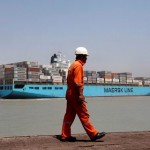South Asia should now have a re-look at regional trade across Asia after the warning by the International Monetary Fund (IMF) on January 31, 2023, that global trade would slow down from 5.4% in 2022 to 2.4% in 2023. This forecast is optimistic with polycrisis risks such as an escalating Russia-Ukraine war, a decoupling from global supply chains and tackling variants of the COVID-19 virus.
A recently published paper in an IMF book, “South Asia’s Path to Resilient Growth”, argues that a strong base exists for South Asia trading more with dynamic East Asia: since the 1990s, South Asia-East Asia trade has gathered pace, which is linked to India’s trade re-aligning towards East Asia through its ‘Look East’ and ‘Act East’ policies, South Asia adopting reforms, and also China offshoring global supply chains to Asia. The total merchandise trade between South Asia and East Asia (in dollar terms) grew at about 10% annually between 1990 and 2018 to $332 billion in 2018, and could reach about $500 billion looking ahead. The handful of free trade agreements (FTAs) linking economies in South Asia with East Asia may rise to 30 by 2030.
In addition, regional trade in Asia is recovering after the COVID-19 pandemic and has opened opportunities for South Asia to participate in global value chains and services trade.
What then needs to be done?
First, regional trade integration across Asia can be encouraged by gradually reducing barriers to goods and services trade. Import tariffs and murky non-tariff measures have risen in several South Asian economies since the 2008 global financial crisis — and never reversed. To get beyond this, South Asia’s trade opening should be calibrated with tax reforms as trade taxes account for much of government revenue in some economies. Adjustment financing to losing sectors to reallocate factors of production and re-training of workers is also essential to promote gains from trade and mitigate income inequality.
Second, improve the performance of special economic zones (SEZs) and invest in services SEZs to facilitate industrial clustering and exports. South Asia has over 600 SEZs in operation, in Kochi (India), Gwadar (Pakistan), Mirsarai (Bangladesh) and Hambantota (Sri Lanka). However, these SEZs have a variable record in terms of exports and jobs and fostering domestic linkages. Competitive fiscal incentives only matter on the margin in the locational decisions of multinationals, and long tax holidays deprive economies of vital tax revenue. Improving SEZ processes and outcomes in South Asia requires ensuring macroeconomic and political stability, adopting good practice regulatory policies towards investors, providing reliable electricity and 5G broadband cellular technology, and also upgrading worker skills.
Third, pursue comprehensive FTAs that eventually lead to the Regional Comprehensive Economic Partnership (RCEP) to provide for a regional rules-based trade to insure against rising protectionism. While South Asia is a latecomer to FTAs when compared to East Asia, it has made a start with the Japan-India FTA, the Sri Lanka-Singapore FTA and the Pakistan-Indonesia FTA.
But the devil is in the detail. South Asian economies need to improve tariff preference use by better preparing business in navigating the complex rules of origin in FTAs and including issues relevant to global supply chains in future FTAs. Although India opted out of the RCEP talks in November 2019, the door is still open for it to join the agreement. India has also concluded FTAs with the United Arab Emirates and Australia in 2022. The confidence gained from these can help prepare for future RCEP membership by undertaking structural reforms to boost business competitiveness in supply chains and foster greater regulatory coherence with East Asia.
If India joins RCEP, the rest of South Asia may be incentivised to join out of a fear of being left out and suffering from trade diversion effects.
Fourth, a reinvented trade-focused Bay of Bengal Initiative for Multi-Sectoral Technical and Economic Cooperation (BIMSTEC) can facilitate stronger trade ties and support the interests of smaller members. Inactivity in the South Asian Association for Regional Cooperation (SAARC) means that India is laying emphasis on BIMSTEC to foster South Asia and Southeast Asia cooperation. Reinventing BIMSTEC requires better resourcing its Secretariat, concluding the long-running BIMSTEC FTA, building trade capacity in smaller economies, and introducing dialogue partner status to encourage open regionalism in Asia.
While broad South Asia-East Asia trade may be desirable, the advent of increasingly complex geopolitics might rule this out for some time. Accordingly, a narrower geographical coverage between South Asian and Southeast Asia may be a building block for eventual trade integration across Asia. To mitigate a backlash against regionalisation, the larger economies should facilitate gains from trade to the smaller economies.
Slowing global trade means that trading more within Asia makes economic sense. Having the political will to implement pro-trade policies can improve the lives of Asians. India is South Asia’s largest economy and its G-20 presidency can be a good platform to initiate these changes.
Dr. Ganeshan Wignaraja is Professorial Fellow for Economics & Trade at Gateway House.
A version of this article was published in The Hindu.


